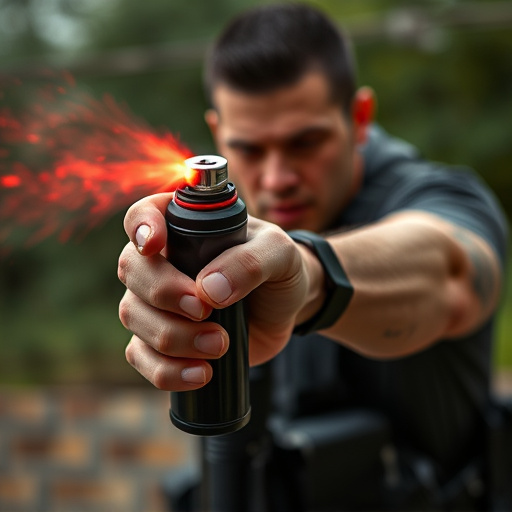Anti-assault pepper spray uses capsaicin from chili peppers to temporarily disable attackers by irritating eyes and respiratory systems, aiding escape or help-seeking in dangerous situations. Effective distance, weather, and attacker resistance vary. Proper training and understanding usage instructions are essential for reliable performance. In case of exposure, immediate care involves moving to safety, removing contaminated clothing, flushing affected skin and eyes with water for 15 minutes, and seeking medical attention if necessary. Regular testing and understanding local laws regarding possession and use are crucial for responsible self-defense.
“Uncover the power of anti-assault pepper spray—a crucial self-defense tool in today’s diverse world. This comprehensive guide explores its composition, efficacy, and real-world applications. Learn how this non-lethal weapon can disrupt an attacker’s senses, providing vital time to escape. Furthermore, we delve into immediate care after exposure, offering a step-by-step guide to minimize discomfort. Understand legal considerations and best practices for responsible carrying, ensuring you’re prepared and protected.”
- Understanding Anti-Assault Pepper Spray: Its Composition and Efficacy
- Immediate Care After Exposure to Pepper Spray: Step-by-Step Guide
- Legal Considerations and Best Practices for Carrying Pepper Spray for Self-Defense
Understanding Anti-Assault Pepper Spray: Its Composition and Efficacy
Anti-assault pepper spray is designed as a non-lethal self-defense tool, aimed at temporarily incapacitating an attacker through targeted irritation of the eyes and respiratory system. Its primary active ingredient is capsaicin, a chemical compound derived from chili peppers. This substance is safe for individuals without pre-existing conditions when used responsibly.
The efficacy of pepper spray lies in its ability to provide immediate care during dangerous situations. When deployed, it creates a burning sensation and reduces visibility, allowing the user to escape or seek help. However, its effectiveness can vary based on factors like distance, weather conditions, and the attacker’s resistance. Proper training and understanding usage instructions are crucial for ensuring its reliability in emergency scenarios.
Immediate Care After Exposure to Pepper Spray: Step-by-Step Guide
If exposed to pepper spray, immediate care is crucial to mitigate discomfort and potential long-term effects. The first step is to move to a safe, open area away from the source of the spray. Remove any clothing or accessories that may have absorbed the irritant, being careful not to rub the eyes or face.
Next, flush the affected areas with plenty of clean water for at least 15 minutes. This helps to dilute and wash away the pepper spray chemicals. For eye exposure, continue flushing while gently rubbing the eyelids to help remove any residual spray. Seek medical attention if irritation persists or if breathing becomes difficult. Always carry a readily available supply of immediate care items, including water, clean fabrics, and a first aid kit containing eye flush solutions for swift and effective treatment after exposure to pepper spray.
Legal Considerations and Best Practices for Carrying Pepper Spray for Self-Defense
When considering pepper spray as a self-defense tool, it’s crucial to understand the legal implications and best practices for carrying it. Each jurisdiction has specific laws regarding the possession and use of pepper spray, so understanding your rights and responsibilities is essential. It’s important to note that in many places, there are restrictions on the type and amount of pepper spray allowed, as well as where and how it can be carried. Always check local legislation before purchasing and carrying pepper spray.
Best practices for immediate care after using pepper spray include ensuring you are at a safe distance from the assailant, allowing them to recover, and then seeking medical attention if necessary. Pepper spray can cause severe discomfort and temporary disability, so it’s important to use it responsibly and only as a last resort. Additionally, keeping your spray in an easily accessible location, regularly testing its effectiveness, and being familiar with its range and effects are key to effective self-defense.
Anti-assault pepper spray is a powerful self-defense tool, offering a non-lethal means of deterring and disabling an attacker. By understanding its composition, efficacy, and legal considerations, individuals can make informed decisions about carrying pepper spray for personal safety. Equip yourself with knowledge and the right tools, and remember that immediate care after exposure is crucial, as outlined in this guide. Always prioritize safety and stay prepared for unexpected situations.
